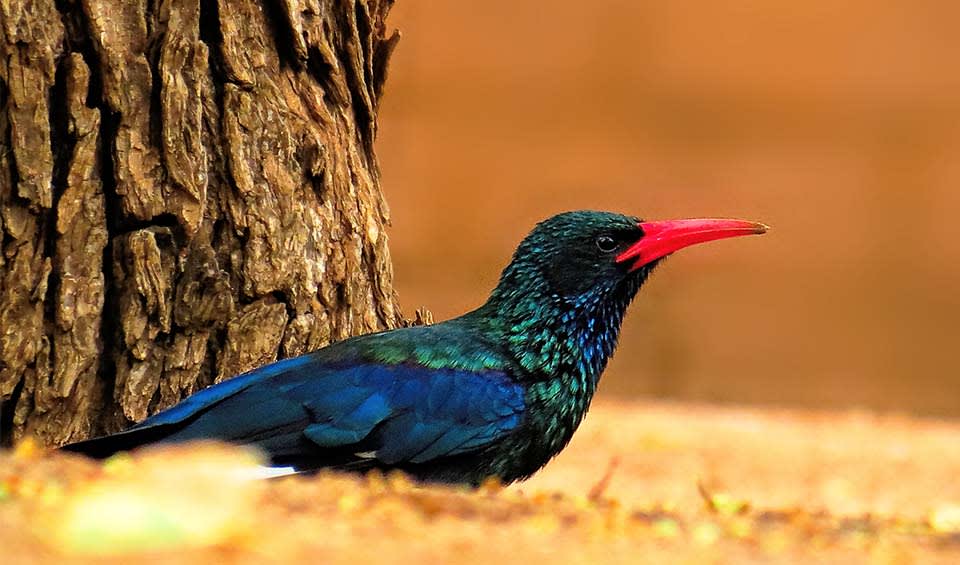Phoeniculus
Noisy yet graceful, with metal-hued feathers trailing down their beautiful tails
These birds are endemic to sub-Saharan Africa, where they occupy a variety of woodland and savannah habitats, each species adapted to its particular ecological niche.
Phoeniculus hoopoes are often mistaken for woodpeckers due to their tree-climbing behavior, but they are quite distinct in both form and function. While they do climb trees, their tails are not as robust as those of true woodpeckers, and thus, they do not use them for support. Instead, they rely more heavily on their strong feet, adapted for gripping tree bark and hopping along the ground. This behavior is particularly evident when they are foraging, as they prefer to hop in search of insects rather than walk.
These birds are predominantly insectivorous, with a particular fondness for arthropods. They have adapted to forage in a variety of ways, including probing into crevices with their long, curved bills and even following swarms of army ants to feed on the insects that flee from the ants’ path. Their foraging technique is a testament to their adaptability and the role they play in controlling insect populations.
Socially, Phoeniculus hoopoes are quite remarkable. Unlike many bird species that are either solitary or form pairs, these birds often live in groups. Their social structure is complex, with a hierarchy that is maintained through various interactions, including the display of their vibrant tail feathers and a range of vocalizations. The rally of chuckles and oscillations is not just a means of communication but also reinforces social bonds within the flock and coordinates group activities.
The wood hoopoes exhibit a cooperative breeding system, where the breeding pair and other group members participate in caring for the young. This cooperative behavior extends to the sharing of food, sentinel behavior, and communal roosting, which enhances the offspring’s survival rates and strengthens the group’s social fabric.
Species in this genus
Green wood hoopoe
Insect-eating, tree-dwelling, and an incredible co-partner. That said, there’s nothing uninteresting about this one


